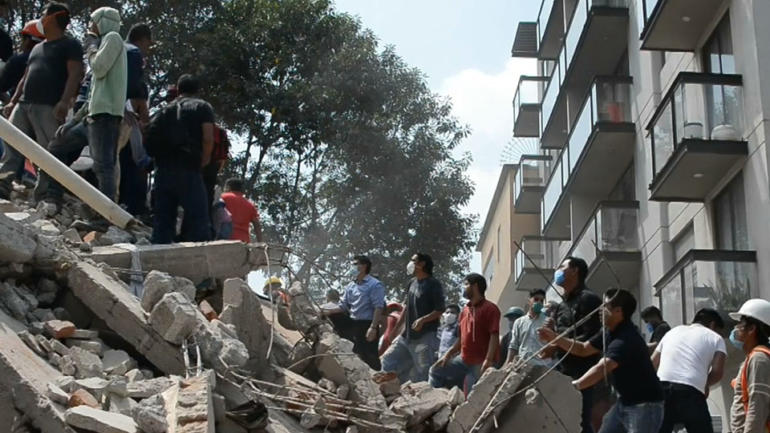There is a science to Mexico’s vulnerability to earthquakes. It has to do with the country lying at the convergence of three of the Earth’s largest tectonic plates. But it took a deadly earthquake in 2017 to get Mexico to start making better preparations.
CGTN’s Alasdair Baverstock reports.
On September 19, 2017, Mexico City was rocked by the worst earthquake to hit the capital in 35 years. Hundreds were killed, and more than a year on, the event lingers on the capital’s psyche.
As the city looks to the future, more people are preparing for the next natural disaster. It’s a mindset that Reynaldo Vela, the inventor of a disaster survival pod, is taking advantage of.
“We started warning people of the danger of the next ‘Big One’,” he said, sitting beside his K107 capsule. “No one believed us. Now, the public takes the threat of earthquakes seriously.”
Vela said his survival capsule will shield a person from 500 tons of rubble, and allow them to survive for up to a month inside.
On the municipal level, Mexico city has updated its emergency app to send seismic alerts directly to smartphones. Builders and architects argue stricter building codes are needed to brace for the next ‘Big One’ – while others said existing regulations simply need to be enforced. And no amount of preparation can eliminate risk.
“In Mexico, we are still expecting a very large earthquake to occur,” Nicolas Dominguez, a Mexico City seismologist said. “The problem is that earthquakes still remain unpredictable, and the movement of seismic still remain unpredictable, and the movement of seismic plates is hard to track.”
Despite more conscious efforts to prepare, local authorities remain concerned about uncontrolled private development.
Jose Piña is the head of civilian rescue operations in one of capital’s largest boroughs.
“As to whether the population are prepared for another earthquake, I would say not,” Piña said. “There are many families which continue to build their own houses: constructing on unstable ground, without the proper materials, and without the technical knowledge of how to build properly. So of course we are not prepared to confront the risks of seismic activity.”
In a region of seismic activity, the question for the Mexican capital is not if another earthquake will strike, but whether the capital will be better prepared when one does.
 CGTN America
CGTN America

